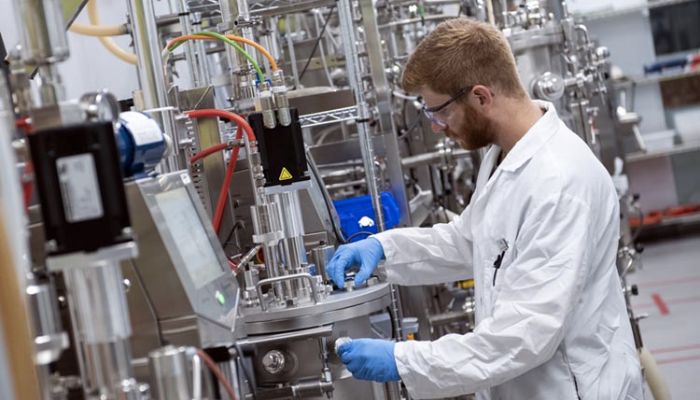New Sustainable Resin for 3D Printing Developed at Penn State

Pennsylvania State University, better known as Penn State, has often been cited as being at the forefront of numerous advances in 3D printing technologies, such as recent research utilizing 3D printing in the fight against breast cancer. Now, a team of Penn State agricultural engineers and biologists have developed a new resin 3D printing material derived from natural, plant-based components. While still undergoing testing, its ultimate intention is to serve as a replacement for traditional plastics in large-format SLA 3D printing.
The U.S. Department of Agriculture’s National Institute of Food and Agriculture has awarded the Penn State research team a $650,000 grant over the next three years. The aim of the project is to lower the cost of expensive, highly engineered materials that are currently created through mixing petrochemical-derived components.

Penn State researchers James Godwin and Kassem Bokhari test the strength of a 3D printed part made with the new resin.
Stephen Chmely, assistant professor of Agricultural and Biological Engineering in the College of Agricultural Sciences and research team leader explains, “Our project team’s long-term goal is to develop new and sustainable bioproducts from lignocellulosic biomass — or dry plant matter — that economically enable a low-carbon bioeconomy.” Specifying his long-term goal, he adds, “The objective of this proposal, which is a step toward our long-term goal, is to create a renewable resin material comprised of agriculturally derived components that will enable large-format 3D printing by stereolithography.”
The team of researchers and engineers are working with plant-based materials such as lignin and nanocellulose, developing their chemical properties to create these new stereolithographic resins consisting of renewable resources that contain these materials together with soybean oil. Lignin is a complex organic polymer whose function is to make the walls of plants rigid and woody. On the other hand, nanocellulose is generated from wood pulp and composed of tiny particles. Stephen Chmely, explains that the results given back from these materials were previously thought to be impossible. According to the assistant professor, the resins that are being developed by the team have exceptional properties, presenting greater elasticity, hardness and thermal resistance than conventional resins for 3D printing.
Penn State’s Department of Agricultural and Biological Engineering provides the team with a unique perspective at the intersection of materials science and engineering with agriculture and forestry which are two main sectors who may benefit by the research. Chmley says that his team has “abundant expertise in lignin chemistry, cellulose nanomaterials and 3D printing by stereolithography” thanks to the knowledge base provided by the department. He fully expects the development of these materials to have a major impact on the additive manufacturing industry as well as the rural communities that provide the biomass feedstock which may be used to make the resin in the case of future growth. For more information about the research at Penn State, click HERE.

The Penn State Department of Agricultural and Biological Engineering
What do you think of Penn State’s research into new naturally-derived 3D printing resin? Let us know in a comment below or on our LinkedIn, Facebook, and Twitter pages! Don’t forget to sign up for our free weekly newsletter here, the latest 3D printing news straight to your inbox! You can also find all our videos on our YouTube channel.
*All Photo Credits: Penn State







